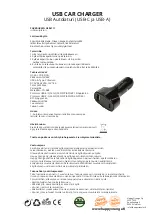
12
After a while the image looks like it has a metallic
sheen in dark areas
‘Bronzing’ occurs when dye-to-dye interactions compete
with the dye to substrate interactions. The dyes in the
ink aggregate or crystallise on the paper surface, which
leads to a loss in optical density. It can be limited by
reducing the amount of black in the image.
Different colours seem to have merged
Colour to colour bleed is a common problem when the
wrong stock is chosen. The ink doesn’t dry fast enough
and its dyes are not immobilised quickly enough, with
the result that they blend together. Bleed does not
always happen immediately, but may happen some time
after printing, particularly in the case of exposure to heat
or humidity or by oil based/solvent based inks over time.
Edges look jagged
If the resolution of the file is too low or the enlargement
too great then this can lead to ‘jaggies’, these are where
the individual pixels of the image become visible and are
especially obvious in the curved parts of the text that
have been over-enlarged.
The image looks very grainy and pixelated, curves
have a stepped appearance
Many images from the web or free CD’s can be of low
resolution. In general a full-page bitmap file will be
several megabytes in size, although the stored version
may be smaller if it is compressed (e.g. jpeg).
An important factor in achieving quality prints is
resolution. This related to how much pictorial
information a file holds. The DPI (dots per inch), tells us
the resolution of an image; the higher the dpi, the higher
the resolution and hence the finer the detail of the
printed image. High resolution is generally considered to
be 1500-5000 dpi.
The ink seems to leak through to the other side of
the paper
This is known as ‘strike through’ and occurs when the
paper has insufficient absorption capacity for the density
of ink. – Use a higher grade or heavier coated paper.
The image is not the right colour
This can have many origins: the colour of the print may
well not match that of the screen or the original unless
great care has been taken to calibrate each element of
the system. The colour of an image can be corrected
either in the imaging application or in the printer driver.
If you have several images from the same source, e.g.
camera, scanner or CD, then they are likely to all have
the same characteristics. Images that come from
varying sources may need to be calibrated before use.
The image is too light or dark
This could be because the original image is very dark, or
light, either change this in the application or use the
controls of the driver to try to lighten the image. When
scanning an image, try to use the white and black point
controls to set the range of light and dark for the image.
If it doesn’t print like the screen image this may be
because your screen is not calibrated. Several tools exist
to help set up the monitor, these are often shipped
either with the image application or with the graphics
card.
Paper is too
adsorbent and
ink can be seen
on back of sheet
Inks do not dry
fast enough and
blend together
The eye is very sensitive to ‘breaking’ of smooth curves.
The figure on the right is double the resolution of the
figure on the left, it’s easy to see that if the resolution is
higher a smoother curve can be produced.
Low resolution output
High resolution output -
2400-3200dpi
The questions is ? . . .






































